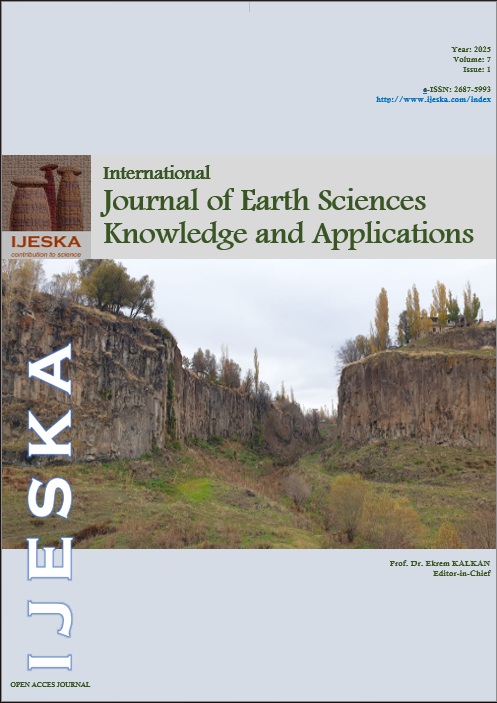Effect of Acacia Gum Powder on the Rheological and Thixotropic Properties of Drilling Fluids
Keywords:
Acacia gum powder, drilling fluid, Rheology, Thixotropy, DrillingAbstract
Drilling operations are an important component of energy production. For a successful drilling operation, high efficient drilling fluid must be used. The efficiency of drilling fluid is provided by different organic and inorganic additives. In this study, the effect of acacia gum powder on the rheological and thixotropic properties of drilling fluids is investigated and the results are compared with Xanthan Gum is widely used in industrial applications. In the experiments, acacia gum powder and xanthan gum were added to the spud type drilling fluids prepared at different ratios (between 0.05-1.0 wt.%). Firstly, rheogram curves of the additive drilling muds were created and the flow profile are determined. Then, rheological properties were analysed by apparent viscosity, plastic viscosity and yield point analysis. Also, thixotropic properties were determined by shear thinning index and thixotropy index calculations. As a result of the analysis, it is determined that acacia gum powder can be used as an alternative additive material to xanthan gum as a rheology and thixotropy enhancer in spud type drilling fluids.
References
Agwu, O. E., Akpabio, J. U., Ekpenyong, M. E., Inyang, U. G., Asuquo, D. E., Eyoh, I. J., Adeoye, O. S., 2021. A comprehensive review of laboratory, field and modelling studies on drilling mud rheology in high temperature high pressure (HTHP) conditions. Journal of Natural Gas Science and Engineering, 94, 104046.
Akpan, E. U., 2024. Utilising Environmentally Friendly Polymers as Rheological Control and Fluid Loss Additives in Water-Based Drilling Muds. Geoenergy Science and Engineering, 213195.
Caenn, R., Chillingar, G. V., 1996. Drilling fluids: State of the art. journal of petroleum science and engineering, 14(3-4), 221-230.
Guan, Z., Chen, T., Liao, H., 2021. Theory and technology of drilling engineering (Vol. 789). Singapore: Springer.
Khan, M. A., Li, M. C., Lv, K., Sun, J., Liu, C., Liu, X., Shen, H., dai, L., Lalji, S. M., 2024. Cellulose derivatives as environmentally-friendly additives in water-based drilling fluids: A review. Carbohydrate Polymers, 122355.
Kim, J., Dornfeld, D. A., 2001. Cost estimation of drilling operations by a drilling burr control chart and Bayesian statistics. Journal of manufacturing systems, 20(2), 89-97.
Menezes, R. R., Marques, L. N., Campos, L. A., Ferreira, H. S., Santana, L. N. L., Neves, G. A., 2010. Use of statistical design to study the influence of CMC on the rheological properties of bentonite dispersions for water-based drilling fluids. Applied Clay Science, 49(1-2), 13-20.
O KIMYA Limited, 2024. Gum Arabic (Arap Zamki) [Online] Available from: https://okimya.com.tr/jel-kivam-verici-kimyasallar/gum-arabic-arap-zamki/ (Accessed: March 06, 2025).
Oseh, J. O., Mohd, N. M., Gbadamosi, A. O., Agi, A., Blkoor, S. O., Ismail, I., Igbafe, A. I., 2023. Polymer nanocomposites application in drilling fluids: A review. Geoenergy Science and Engineering, 222, 211416.
Villada, Y., Gallardo, F., Erdmann, E., Casis, N., Olivares, L., Estenoz, D., 2017. Functional characterization on colloidal suspensions containing xanthan gum (XGD) and polyanionic cellulose (PAC) used in drilling fluids for a shale formation. Applied Clay Science, 149, 59-66.
Downloads
Published
Issue
Section
License
Copyright (c) 2025 Onur Eser KÖK

This work is licensed under a Creative Commons Attribution-NonCommercial-NoDerivatives 4.0 International License.
The authors keep the copyrights of the published materials with them, but the authors are aggee to give an exclusive license to the publisher that transfers all publishing and commercial exploitation rights to the publisher. The puslisher then shares the content published in this journal under CC BY-NC-ND license.



